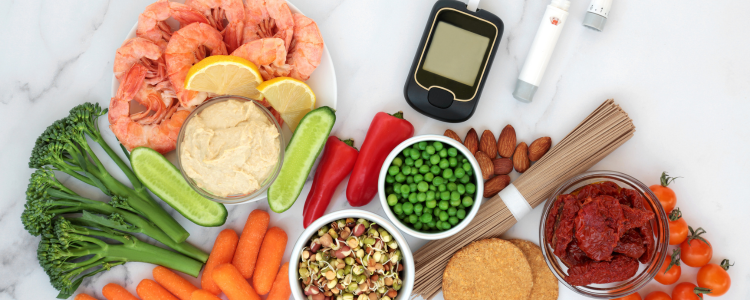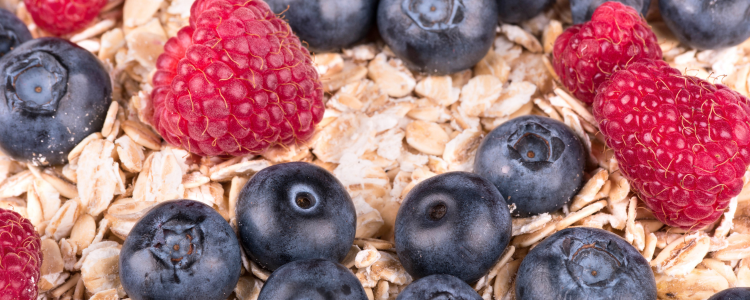
Gestational diabetes is a bit like the surprise guest that shows up right in the middle of pregnancy. We didn't necessarily want to see it, but once it's there... there's no choice, you have to deal with it. And when it hits us, the idea of adjusting our diet can seem daunting. Don't panic! Controlling your blood sugar with the right diet isn't rocket science, we promise. As long as you have the right information. So, what should you eat when you have gestational diabetes? In this article, we'll dive into the heart of the matter with you. We'll explore the different ways to manage this condition during pregnancy, and we'll share our best tips for preparing balanced meals.
Gestational diabetes: what is it?
Gestational diabetes often appears in the middle of pregnancy and results in an increase in blood sugar levels. According to the French Diabetes Federation , this disorder can lead to several risks, such as:
- Preeclampsia in pregnant women.
- Excessive growth in the baby.
Although its name may be confusing, gestational diabetes is different from types 1 and 2! Why? Because it appears during pregnancy without any prior symptoms and often disappears after delivery. However, it requires special attention, as it increases the risk of later type 2 diabetes for both the mother and the child.
When are you at risk of developing gestational diabetes?
Screening for gestational diabetes remains crucial in pregnant women. According to Ameli , we note some main risk factors:
- Age over 35 at the start of pregnancy.
- Overweight or obesity.
- Family history of type 2 diabetes.
- History of gestational diabetes during a previous pregnancy.
- Polycystic ovarian syndrome.
How to manage gestational diabetes?
Medical monitoring
Rest assured: just because you have gestational diabetes doesn't mean your medical follow-up will be more complicated. It will really depend on the stability of your blood sugar levels. If it's well controlled, then you'll have monthly prenatal visits and quarterly ultrasounds, like all women. You may be prescribed an additional test to check the fetus's growth.
On the other hand, if your blood sugar is unbalanced, you will be subject to slightly more intensive monitoring. This includes, among other things, the possibility of inducing your labor at 39 weeks of amenorrhea, in order to limit the risk of complications.
Postpartum, you will also be monitored to confirm the disappearance of diabetes and prevent the risk of hypoglycemia in your baby, especially if you have had to inject insulin or if you are overweight.
Diet and Blood Sugar Management
Managing your diet and blood sugar levels is essential when dealing with gestational diabetes. If you're affected, your doctor will likely emphasize the importance of a balanced diet and regular monitoring of your blood sugar. Here are the commonly recommended tips:
- Eat three meals a day and incorporate two daily snacks to avoid significant blood sugar fluctuations.
- Use a blood glucose meter, available on prescription, to measure your blood sugar levels 4 to 6 times a day. This allows you to adjust your diet and medication based on the results.
- In the absence of contraindications, you are encouraged to practice physical activity adapted to your period of pregnancy, to help you regulate your sugar levels.
Are you trying to conceive and looking for a little help? Our pregnancy supplements are made for you!
Our advice for balanced meals in case of gestational diabetes
As you can see, limiting blood sugar spikes remains essential if you have gestational diabetes. Here are some tips to help you achieve this.
Favor complex carbohydrates
Carbohydrates remain an important source of energy for both the expectant mother and her baby. So, opt for foods such as:
- wholemeal bread;
- whole grains;
- vegetables;
- legumes.
These foods digest slowly, which will help stabilize your blood sugar levels.
Choose lean proteins
Protein is also important in a balanced diet because it promotes satiety. Choose products like:
- cottage cheese;
- plain yogurt;
- plant proteins;
- fish.
They are rich in protein and have a very low impact on blood sugar, making them ideal allies!
Favor foods rich in fiber
Fiber is also fantastic for stabilizing blood sugar because it slows down the absorption of carbohydrates. You'll get it by eating:
- fruits;
- vegetables;
- unground seeds.
Limit sugary foods
Bad news: refined sugars don't play well with diabetes. So, we know, it can be tough (especially when you're pregnant)... but try to cut down on sugary foods. We promise, there are plenty of healthy, non-boring alternatives:
- 80% dark chocolate squares (and more!);
- jam without added sugar;
- flower sugar.
Control fats
Fats don't directly cause blood sugar spikes. However, beware of bad fats! Limit them and favor foods like:
- the lawyer;
- oily fish;
- certain nuts;
- olive oil.
Other low glycemic index foods
Still looking for ideas on what to put on your plate? Here's a (non-exhaustive!) rundown of low GI foods you can eat without moderation:
- Whole-grain bread and cereals: Black bread, oatmeal, quinoa, brown rice... They are rich in fiber and protein, and stabilize blood sugar.
- Non-starchy vegetables: Green leafy vegetables, colorful vegetables (carrots, peppers, tomatoes)… They contain a low amount of carbohydrates, and a relatively low glycemic index (GI).
- Fresh fruit: Apples, berries, citrus fruits… All have a lower GI than fruit juices. They therefore release sugar more slowly into the blood.
- Legumes: Red beans, lentils, chickpeas… They provide a great source of fiber and protein. They are therefore excellent alternatives to animal proteins, which sometimes have a high GI.
- Dairy products: Plain yogurt and cottage cheese (unsweetened). These products are ideal for maintaining balanced blood sugar levels.
- Unprocessed Foods: Raw, unprocessed foods contain more essential nutrients and fiber! And, therefore, a lower GI than processed foods.
Be careful! There are also certain foods that are prohibited during pregnancy . Try to avoid them as much as possible, especially if you have gestational diabetes.

Balanced Meal Ideas for Gestational Diabetes
You've understood that you need to take care of your diet, but you're completely stuck for today's menu? Here are some ideas to help you get started.
Breakfast of a Champion
Oatmeal bowl: Make it with soy milk, add muesli, and a seasonal fruit. Berries are also great to eat in the morning. Don't like plant-based drinks? Swap them for a bowl of plain Greek yogurt!
High-fiber breakfast
Complete salad: Take a bowl of green salad and add seasonal vegetables. Incorporate a source of lean protein (grilled chicken strips, marinated tofu, white fish fillets). Don't forget quinoa or bulgur for starchy foods! And finally, season with a tablespoon of olive oil and balsamic vinegar.
Light dinner
Sautéed vegetables and protein: Sauté a mix of vegetables (broccoli, peppers, mushrooms) with a source of protein (shrimp, diced tofu). Serve with whole grains (barley, spelt), or opt for roasted sweet potatoes, which are excellent for their nutrient-rich and moderate GI.
Snacks and light meals
Healthy Snacks: If you get peckish between meals , choose snacks that stabilize blood sugar levels like almonds, walnuts, or hard cheese.
Smoothies: Blend spinach, a small banana, berries, and plant-based milk. This is a great way to incorporate low-GI vegetables and fruits while ensuring maximum hydration and nutrition.
So, what's the takeaway from all this? Gestational diabetes is perfectly compatible with a smooth pregnancy! If you, expectant mothers, make the right dietary choices in addition to your medical monitoring, you'll love these few months of living together with your baby. We promise.









